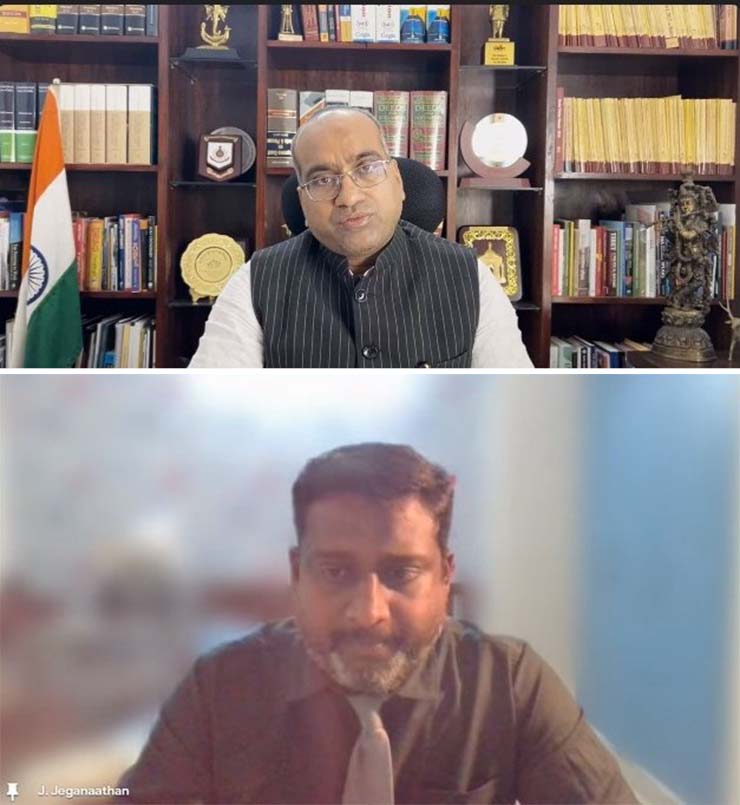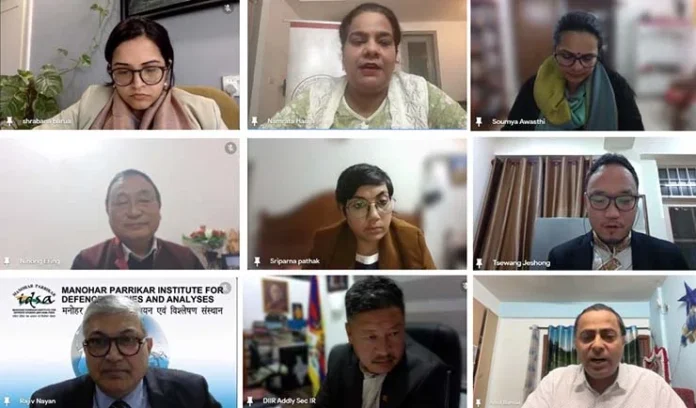The inaugural session of The Siang Dialogue 1.0 titled “The Namsai Note” kicked-off the conference on December 8. It was aimed to stimulate discussions towards the strategic importance of attending to India’s neighbourhood besides providing an opportunity for an in-depth discussion on India’s northeast region.
Ninong Ering–MLA, Arunachal Pradesh Assembly, in his address stated how the northeast region is of great importance for India strategically and geopolitically.
Dr Sriparna Pathak, Associate Professor at OP Jindal Global University, elaborated on the details of the topic in great depth and its impact on the northeast. She talked about how China is weaponising water. Dr Sriparna further added that the mindless construction of dams by China in ecologically sensitive regions like Occupied Tibet and on the Majia Zangbu river, will badly impact natural habitats and its impact can be seen in the form of floods in Arunachal Pradesh, Assam and the entire northeast region.
Dr Rajiv Nayan, Senior Research Associate at Manohar Parrikar Institute for Defence Studies & Analyses elaborated on how the geographical location of Northeast India makes it very special. He further said that the Government has transformed its “Look East Policy” into the “Act East Policy”. In the last 10 years, the northeastern region of the country has witnessed significant transformation on the infrastructure front under the current leadership.
Dr Shrabana Barua, Research Fellow at the Indian Council of World Affairs, focused more on connectivity issue in the northeast region and how it is transforming strategic aspects in the region. Dr Shrabana stressed that we need to address the China factor in the northeast region. She highlighted the example of China reviving the Burma Road, which can lead to an increase in smuggling and opium trade once completed.
Mindless dam construction by China in ecologically sensitive regions like Occupied Tibet and on the Majia Zangbu River, will badly impact natural habitats and its impact can be seen in the form of floods in Arunachal Pradesh, Assam and the entire northeast region
The Bangladesh-Bhutan-India-Nepal (BBIN) initiative is doing good work in integrating the region with neighbouring countries, she said, and suggested that the Indian Government should utilise water resources in the northeastern region to its greatest potential by strengthening inland water connectivity.
Namrata Hasija, Research Fellow at the Centre for China Analysis & Strategy, moderated the session. In her remarks Namrata Hasija said, “North East Region of India is set to play a crucial role in India’s grandiose plan of development. China’s Belt and Road Initiative is being countered proactively & China’s evil plans are upfront now.”
In the second session titled ‘Lohit’s Longitude’ held on December 9 discussion centred on understanding India’s northeast as a gateway to the “Act East policy” of the government.
Sujeet Kumar–MP-RS in his video message said, “Northeast region of India holds immense political and geopolitical importance. India’s ‘Act East Policy’ cannot be successful unless we focus more on the northeast”.

Defence strategist Major Amit Bansal mentioned that India’s Act East Policy is based on the 4 C’s – Culture, Commerce, Connectivity, and Capacity Building. Major Bansal suggested that the Government should focus more on strengthening connectivity between the northeast and the ASEAN countries to make the northeast an engine of growth and also to counter China’s growing influence in ASEAN countries. He further said that to counter China’s influence in the ASEAN region we need to act very fast with our “Act East Policy” and increase our trade with ASEAN countries and only by developing the northeast region at a rapid pace we can achieve it.
Indian Government has transformed its “Look East Policy” into the “Act East Policy”. In the last 10 years, the northeastern region of the country has witnessed significant transformation on the infrastructure front
Ajay Dutt–MLA-Delhi Assembly, highlighted how closely northeastern states are linked with the rest of the country and are extremely rich in natural resources. He stressed how northeastern states can act as a bridge between the Bay of Bengal and Himalayan regions. There is need for exploring the hidden economic potential of the northeast region and strengthening the connectivity of the region with Southeast Asia and other nearby countries, he further added.
In his keynote address, Dr J Jeganaathan Associate Professor-JNU, elaborated on how connectivity and infrastructure are the biggest challenges in the region, as one has to circumvent Bangladesh in order to transport goods, and other requirements.
Dr. Jeganaathan concluded by saying that we need to focus more on Myanmar, Bangladesh and ASEAN countries in light of China’s increasing presence in the region. “There needs to be more substance in India’s Act East Policy with respect to the strategic aspect,” he added.
The third and final session of the conference on December 10 was titled ‘The Tawang Translation’.
The Bangladesh-Bhutan-India-Nepal (BBIN) initiative is doing good work in integrating the region with neighbouring countries, the Indian Government should utilise water resources in the northeastern region to its greatest potential by strengthening inland water connectivity
Dr Ayanjit Sen, senior journalist and Associate Professor at Bennett University said that Arunachal Pradesh has always been and will always remain an integral part of India no matter what may come. Commenting on China he said Arunachal Pradesh holds significant importance for India and it is not “South Tibet” (as claimed by China). He criticised China’s sinister tactics of including Arunachal in its own so called official maps, he concluded by saying, “You can remove Arunachal Pradesh from the map but not from Geography.”
Tenzin Lekshay La, Spokesperson of the Central Tibetan Administration expressed his concern about the ecological damage being done by China in Tibet. Glaciers are melting rapidly; temperature is rising as China is putting so much pressure on the fragile ecology of Tibet. He concluded by appealing to Indians to support Tibet not only emotionally but also through actions. “China is carrying out genocide in Tibet. It is running colonial-style schools in the region to indoctrinate Tibetan children”, he said.
Indian Government should focus more on strengthening connectivity between the northeast and the ASEAN countries to make the Northeast an engine of growth and also to counter China’s growing influence in ASEAN countries
Dr Soumya Awasthi, author and consultant with the Indian Ministry of Defence in the context of China’s actions in Tibet said, “Chinese have a very aggressive and expansionist agenda but Tibet is a very important part of India’s history.” She further added that the Tibet issue continues to be unresolved due to China’s expansionist agenda. It has still not honoured the 1954 agreement of granting autonomy to the Tibetan people to run their own government.
Tsewang Dorji, Researcher at Tibet Policy Institute, in his presentation elaborated on the geopolitical significance of Tawang in India-China relations and China’s Great Game in the Himalayan region. He said that the geopolitical importance of Tibet is very critical to understand China’s expansionist agenda in the Himalayan region.
The RLA plans to have the next edition of Siang Dialogue in Arunachal Pradesh.





